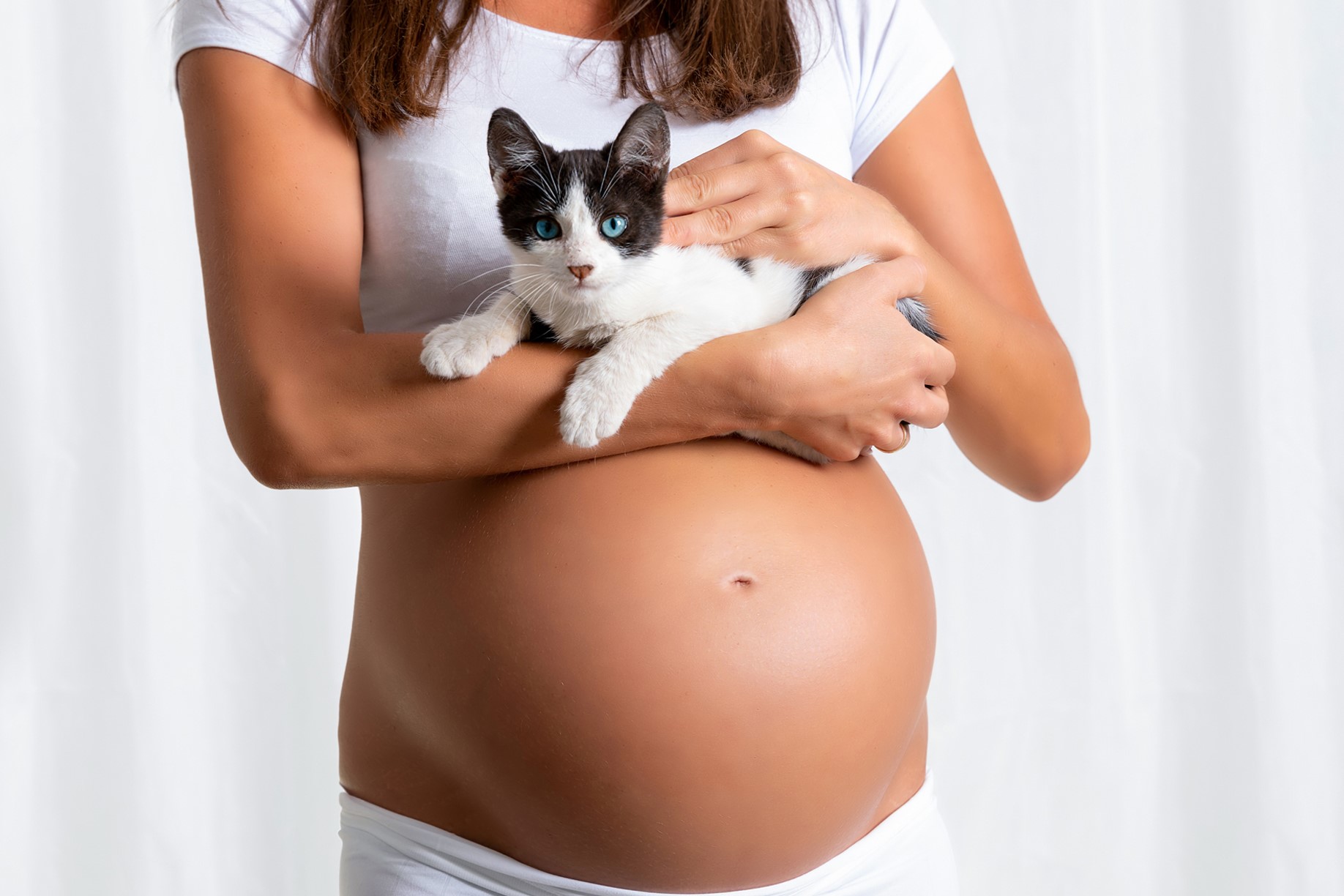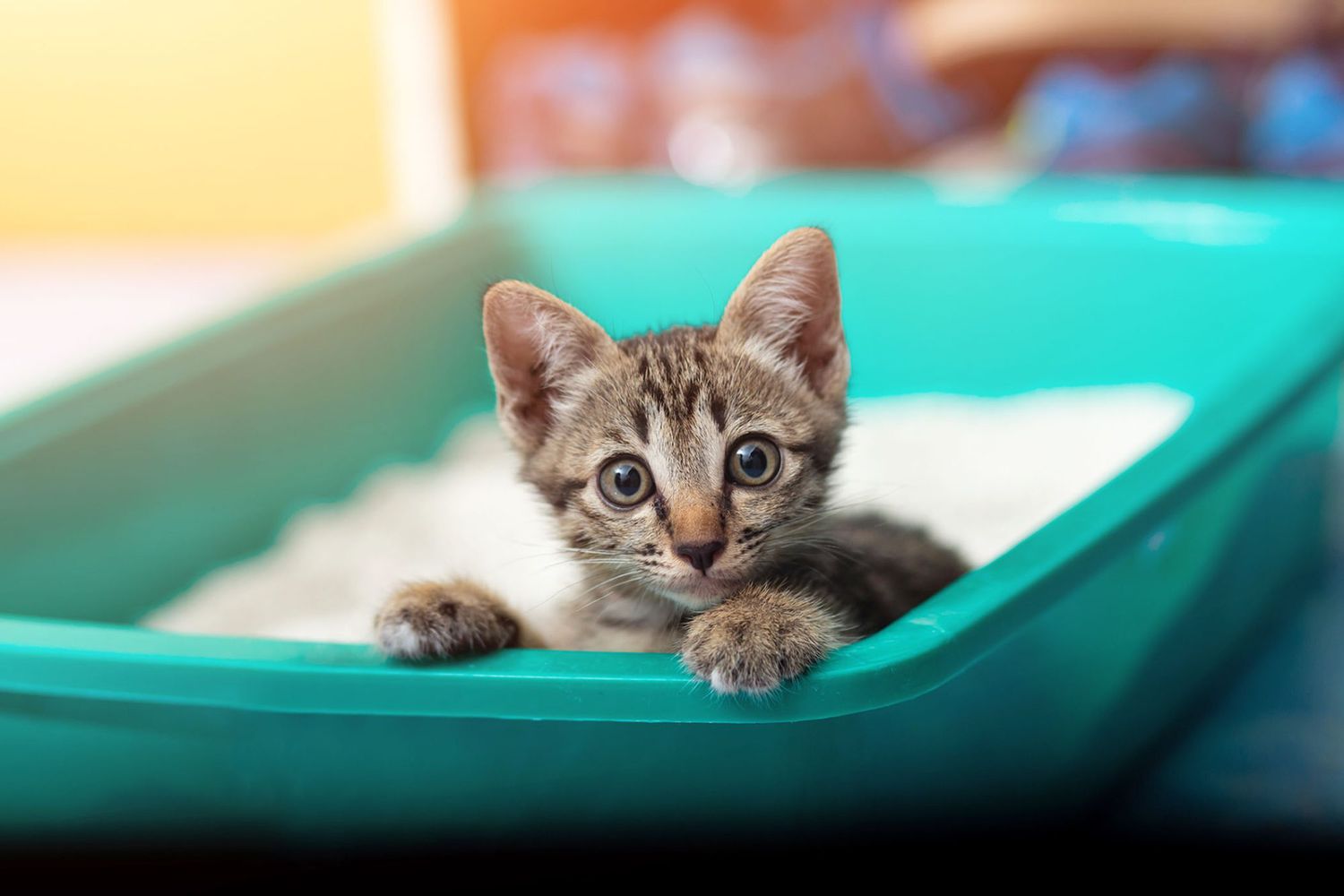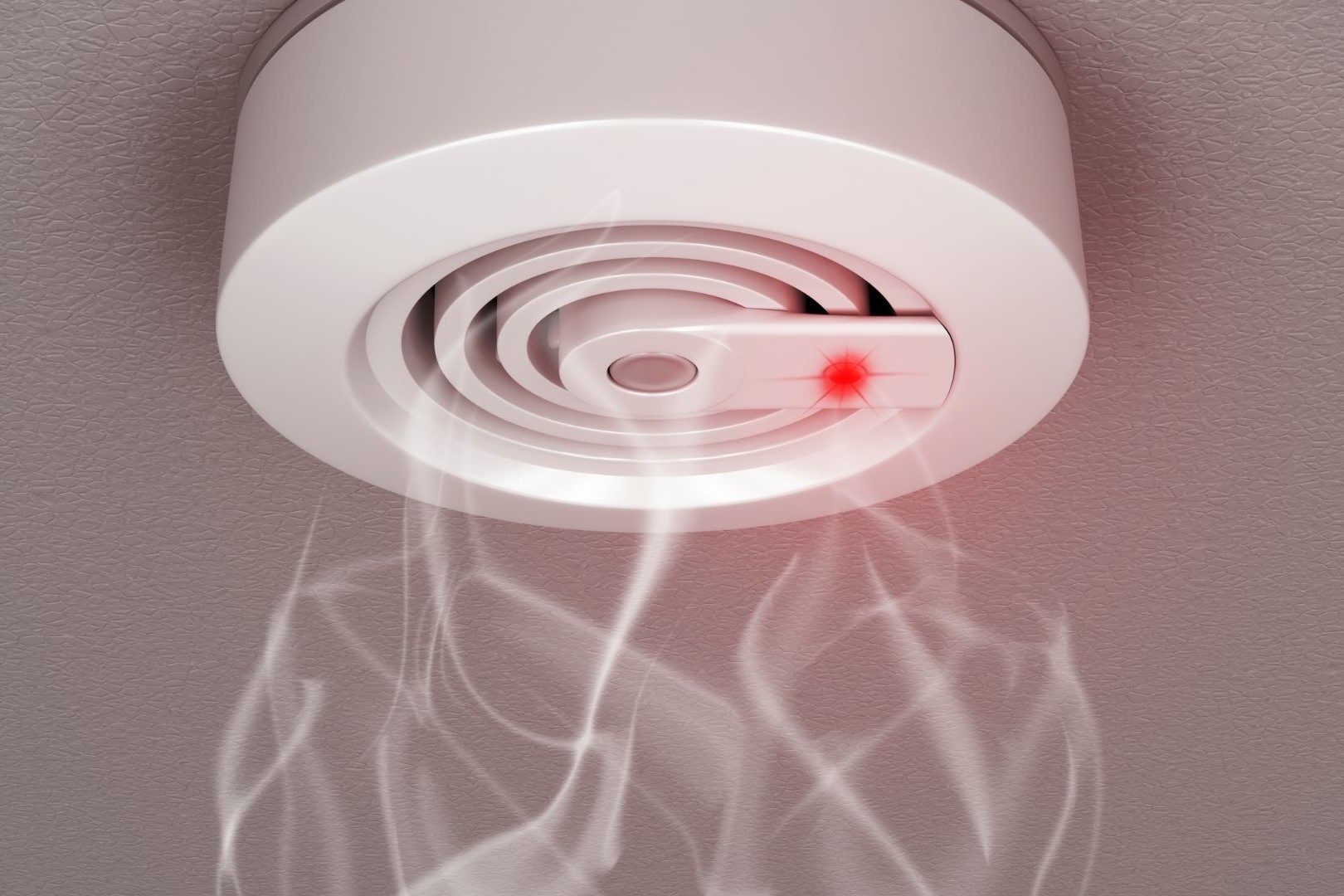Home>Parenting and Children>Pregnant? Here’s The Safest Way To Clean A Litter Box!


Parenting and Children
Pregnant? Here’s The Safest Way To Clean A Litter Box!
Published: February 9, 2024
Learn the safest way for pregnant women to clean a litter box and protect their health. Get essential parenting and children tips here!
(Many of the links in this article redirect to a specific reviewed product. Your purchase of these products through affiliate links helps to generate commission for Noodls.com, at no extra cost. Learn more)
Table of Contents
Introduction
Pregnancy is a time of great joy and anticipation, but it also comes with a heightened awareness of potential risks and hazards. One common concern for expectant mothers is the presence of a household cat and the associated chore of cleaning the litter box. While cats make wonderful companions, their feces can harbor a parasite called Toxoplasma gondii, which poses a risk to pregnant women and their unborn babies. Ingesting or inhaling the parasite can lead to toxoplasmosis, a condition that can have serious consequences for the developing fetus.
As a result, it's crucial for pregnant women to take extra precautions when handling cat litter to minimize the risk of exposure to this parasite. By understanding the risks and implementing safety measures, expectant mothers can continue to care for their feline friends while safeguarding their own health and that of their baby. In this article, we will delve into the potential dangers associated with cleaning a litter box during pregnancy and explore the safest practices to mitigate these risks.
The bond between a pet and their owner is a special one, and many expectant mothers are understandably hesitant to relinquish their role in caring for their beloved cat. However, with the right knowledge and precautions, it is possible to maintain a harmonious coexistence with feline companions while prioritizing the well-being of both mother and child. Let's delve into the essential information that every pregnant woman should know about managing cat litter safely during this precious time.
Understanding the risks
During pregnancy, women are often advised to be cautious about potential sources of infection or harm, and cleaning a cat's litter box is no exception. The primary concern is the presence of Toxoplasma gondii, a parasite commonly found in cat feces. If a pregnant woman becomes infected with this parasite for the first time during her pregnancy, it can pose serious risks to the unborn baby.
Toxoplasmosis, the infection caused by Toxoplasma gondii, can result in miscarriage, stillbirth, or various birth defects if contracted during pregnancy. The consequences of toxoplasmosis for the developing fetus can be severe, potentially leading to neurological problems, vision impairment, or other complications that affect the child's health and well-being.
The parasite is typically transmitted through accidental ingestion of contaminated soil, water, or food, or through handling cat litter. Cats become infected by consuming infected prey or raw meat, and they can then shed the parasite in their feces for a limited period. If a pregnant woman inhales or ingests the parasite through contact with contaminated cat litter, soil, or other materials, it can lead to toxoplasmosis.
It's important to note that indoor cats are not necessarily free from the risk of carrying Toxoplasma gondii. Even if a cat has never been outdoors, it can still become infected through exposure to contaminated soil or raw meat. Additionally, the parasite can remain infectious in cat feces for several days, further emphasizing the need for caution when handling litter boxes.
Understanding these risks is crucial for pregnant women and their families. By being aware of the potential dangers associated with Toxoplasma gondii and toxoplasmosis, expectant mothers can take proactive measures to minimize the risk of exposure and protect the health of their unborn child. In the following sections, we will explore the specific safety precautions and the safest methods for cleaning a litter box during pregnancy, empowering women to make informed decisions and confidently care for their feline companions while safeguarding their well-being.
Safety precautions for pregnant women
During pregnancy, taking proactive measures to minimize the risk of exposure to Toxoplasma gondii is essential for the well-being of both the expectant mother and her baby. Here are some crucial safety precautions for pregnant women when it comes to handling cat litter:
-
Delegate the task: Given the potential risks associated with cleaning a litter box, it's advisable for pregnant women to delegate this chore to a trusted family member or friend. By assigning this responsibility to someone who is not pregnant, the risk of exposure to Toxoplasma gondii can be effectively minimized. This simple step allows expectant mothers to avoid direct contact with cat feces and reduce the likelihood of infection.
-
Use protective gloves: If it's not feasible to delegate the task, pregnant women should wear disposable gloves when cleaning the litter box. This provides a physical barrier between the skin and any potentially contaminated material, reducing the risk of direct exposure to the parasite. After completing the task, the gloves should be carefully removed, and thorough hand hygiene practices should be observed.
-
Maintain good hygiene: Practicing good hygiene is crucial for pregnant women, especially when it comes to handling cat litter. After cleaning the litter box or coming into contact with any potentially contaminated surfaces, it's important to wash hands thoroughly with soap and water. This simple yet effective measure can significantly reduce the risk of inadvertently ingesting or transmitting the parasite.
-
Clean the litter box regularly: Regular cleaning of the litter box is essential for minimizing the risk of Toxoplasma gondii contamination. Pregnant women should ensure that the litter box is cleaned daily, as the parasite requires a certain amount of time to become infectious after being shed by the cat. By promptly removing and disposing of soiled litter, the likelihood of exposure to the parasite is reduced.
-
Wear a mask: When cleaning the litter box, wearing a mask can provide an additional layer of protection against inhaling any airborne particles that may contain the parasite. This precaution is particularly important for pregnant women, as it helps minimize the risk of inhalation exposure to Toxoplasma gondii while handling cat litter.
By diligently adhering to these safety precautions, pregnant women can effectively minimize the risk of exposure to Toxoplasma gondii and reduce the likelihood of contracting toxoplasmosis during pregnancy. These measures empower expectant mothers to prioritize their health and that of their unborn child while maintaining a safe and nurturing environment for their feline companions.
The safest way to clean a litter box
When it comes to cleaning a litter box during pregnancy, taking the utmost precautions is essential to minimize the risk of exposure to Toxoplasma gondii. Here's a detailed guide outlining the safest way for pregnant women to clean a litter box while safeguarding their health and that of their unborn child.
-
Delegate the task: If possible, pregnant women should delegate the responsibility of cleaning the litter box to a non-pregnant household member. By entrusting this chore to someone who is not at risk of pregnancy-related complications from Toxoplasma gondii exposure, expectant mothers can effectively eliminate the risk of direct contact with cat feces.
-
Protective gear: In instances where delegating the task is not feasible, pregnant women should wear disposable gloves while cleaning the litter box. This provides a physical barrier between the skin and any potentially contaminated material, reducing the risk of direct exposure to the parasite. After completing the task, the gloves should be carefully removed and discarded, followed by thorough hand hygiene practices.
-
Good hygiene practices: Practicing good hygiene is crucial for pregnant women, especially when handling cat litter. After cleaning the litter box or coming into contact with any potentially contaminated surfaces, it's important to wash hands thoroughly with soap and water. This simple yet effective measure significantly reduces the risk of inadvertently ingesting or transmitting the parasite.
-
Regular cleaning: Pregnant women should ensure that the litter box is cleaned daily to minimize the risk of Toxoplasma gondii contamination. Prompt removal and disposal of soiled litter reduce the likelihood of exposure to the parasite. Additionally, pregnant women should consider using clumping litter, as it allows for easier and more efficient removal of waste.
-
Ventilation and masks: When cleaning the litter box, ensuring adequate ventilation in the area is important to minimize the concentration of airborne particles. Pregnant women should consider wearing a mask to reduce the risk of inhaling any airborne particles that may contain the parasite. This precaution provides an additional layer of protection against inhalation exposure to Toxoplasma gondii while handling cat litter.
By following these safety measures, pregnant women can confidently care for their feline companions while minimizing the risk of exposure to Toxoplasma gondii. These proactive steps empower expectant mothers to prioritize their health and that of their unborn child, ensuring a safe and nurturing environment for both the family and their beloved pets.
Conclusion
In conclusion, the journey of pregnancy brings forth a multitude of considerations and precautions, and the management of cat litter presents a significant aspect of this careful approach. Understanding the potential risks associated with Toxoplasma gondii and toxoplasmosis is paramount for expectant mothers, enabling them to make informed decisions regarding the safest practices for handling cat litter while safeguarding their well-being and that of their unborn child.
By embracing the safety precautions outlined in this article, pregnant women can confidently navigate the responsibility of managing a litter box while minimizing the risk of exposure to the parasite. Delegating the task of cleaning the litter box to a trusted individual, utilizing protective gloves, practicing meticulous hygiene, and ensuring regular cleaning of the litter box are fundamental steps that empower expectant mothers to maintain a safe environment for themselves and their feline companions.
It's important to recognize that the bond between a pet and their owner is a cherished and significant aspect of many families' lives. By incorporating the recommended safety measures into their routine, pregnant women can continue to nurture this bond while prioritizing the health and well-being of their unborn child. The ability to coexist with a beloved cat during pregnancy is achievable with the right knowledge and precautions in place.
Ultimately, this comprehensive approach not only mitigates the risk of toxoplasmosis but also fosters a sense of reassurance and confidence for expectant mothers, allowing them to embrace the joys of pet ownership while safeguarding their pregnancy. By arming themselves with the necessary information and implementing the safest practices, pregnant women can navigate the care of their feline companions with diligence and care, fostering a harmonious environment for both their family and their beloved pets.
In the midst of the myriad considerations that pregnancy entails, the safety of handling cat litter is a tangible and manageable aspect, ensuring that expectant mothers can continue to experience the joys of pet ownership while prioritizing the health and well-being of their growing family. With knowledge, precaution, and care, the coexistence of pregnant women and their feline companions can be harmonious and safe, enriching the journey of pregnancy with the presence of cherished pets.













